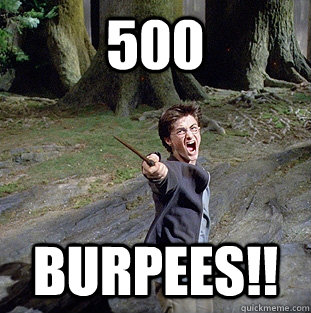When my wife and I first started dating there’s one thing I used to do that used to drive her crazy.
It didn’t involve placement of the toilet seat. I put that shit down like a champion. And it didn’t involve my use of colorful language; she’s equally as potty mouthy as me.
In hindsight this “thing” was borderline unforgivable, and, to be honest, I’m kind of embarrassed to admit this. Here goes:
My name is Tony Gentilcore and I used to order my steaks well-done.

I was such an a-hole.
At the time I just didn’t know any better. Prior to meeting Lisa a romantic dinner out for me was hitting up Applebee’s on 2 for 1 entree night.1 So you can imagine the look of disdain on her face when we went to a fancy schmancy restaurant in the North End here in Boston on date #3 and I did what I did.
I might as well have belched the theme song to Fresh Price of Bel Air while being seated or, I don’t know, farted in her Caesar salad. Both would have been less egregious dinner etiquette snafus than ordering a steak well-done.
I mean, WTF?
She married me nonetheless. But not until we had a “talk” and she made me watch every season of Top Chef.
Speaking of “talks,” I posted this Tweet the other day and it sparked some good comments:
What’s the one thing you have the hardest time getting clients to adopt? Mine is rest periods. More specific: actually taking rest.
— Tony Gentilcore (@tonygentilcore1) July 25, 2017
I’ve been coaching people for a little over 15 years now and the idea of rest periods – or, to be more specific – actually taking rest between sets – is the one thing I still have the hardest time getting many of my clients to adopt.
Whether it’s because they’ve taken one too many CrossFit classes or because of their supercharged Type A personality on steroids, the idea of taking rest between sets – let alone a rest day – doesn’t compute.
Half my battle with new(ish) clients is to get them to understand there’s a rationale and purpose for rest periods, that they’re good for them, will help them, and more importantly…that they won’t lose any points for Gryffindor for standing in place for more than 30 seconds without performing a burpee.

Don’t get me wrong: there’s a time and place for metabolic or circuit-based training that require diminished rest periods; especially if the goal is to increase conditioning and/or work capacity. However, I can’t tell you how many times someone has started with me, expressed an interest in getting stronger, and I have to do everything in my power to get them to chill out.
Day one/program one is always interesting. They’ll do a set and before I can offer any feedback they’re half-way through set #2.
Eight minutes later they’re done with their program and asking for more.
I can appreciate their willingness to get after it, but the “go go go” approach is almost always why 1) they haven’t seen any significant improvements in their lifts in eons and 2) they have an inane proclivity at being hurt all the time.
As strength coach, Mike Sheridan, wrote in THIS post on my site last year:
“Despite the ‘rest makes you weak’ mantra from aerobic instructors, or the ‘no pain no gain’ philosophy of many CrossFitters, we start training a different energy system when rest is too short.
We’re not trying to exhaust the muscle, we’re trying to strengthen and improve it.
When we perform an endless number of muscle contractions (repetitions), we end up building muscular endurance as opposed to hypertrophy or strength.
And start training aerobically, instead of anaerobically.
Compromising our ability to build strength and muscle, and facilitating an overall loss in power and explosiveness. Whether it’s resistance training or not.
Even though shorter rest periods produce a larger hormonal response and more metabolic stress, while longer rest periods allow for more weight to be lifted on subsequent sets, there is still a minimum threshold for proper recovery.
If rest periods are too short, the number of reps declines, the weight lifted declines, and so does the total workout volume.”
Shorter rest periods do have a positive effect on metabolic stress, one of the factors that plays into improved hypertrophy (growth) of the muscle. However when strength is the goal it’s important to note that too short of rest, while great for increasing things like levels of testosterone, IGF-1, and gH, can be offset due to the decrease in mechanical tension and strength output, all of which stems from accumulated fatigue (due to lack of rest).
To keep things to a nice, short, and succinct stopping point I can’t state things any better than what Mike says here:
“We don’t want our rest period at a point where it’s difficult to perform as much ‘work’ as would be possible with slightly longer rest. Which means keeping it high enough to maximize the number of successful reps over multiple sets, while still experiencing adequate metabolic stress to stimulate hypertrophy.”
The “sweet spot,” then, is 90-180 seconds of rest between sets.
This can seem like torture to some people, analogous to scratching nails on a chalkboard or worse, being forced to watch What the Health in a room full of vegetarians.2
To that end I find rest periods to be opportune time to take advantage of “filler” exercises. You know, exercises that activate or mobilize stuff that people are supposed to do in their warm-ups that they inevitable always skip.
If someone has poor T-spine rotation or extension I’ll have him or her perform some Side Lying Open Books in between sets of deadlifts:
Side Lying Open Book
Or maybe they need to work on a little adductor length and opening up their hips more. If that’s the case this drill works wonders in between sets of squats:
Happy Baby Stretch
NOTE: I mis-spoke and called this the “goalie stretch” in the video, but I also have a 5-month old at home and haven’t slept since January, so fuck off…;o)
Filler exercises can be anything: glute activation drills, scapular upward rotation drills, T-spine mobility drills, hip flexor mobilizations, a particular stretch, naming all the members of Wu-Tang Clan, anything. The idea is they’re low-grade, low-demand, easy, and address something that won’t sacrifice performance on subsequent sets of iron work.
Heck, if all else fails, if someone is still flying through things, this would be one of the rare instances where I’d encourage them to go peruse their Instagram feed or post a picture of their protein shake on Twitter.
There’s little room to be ambiguous. More times than not, if someone wants to make and see progress in the gym…getting them to respect rest periods is going to be an important conversation to have. It’s the easiest way to ensure one recovers and is able to sustain performance and high(er) outputs during their training sessions.
Having a discussion about “off-days” is a blog post for another day.



